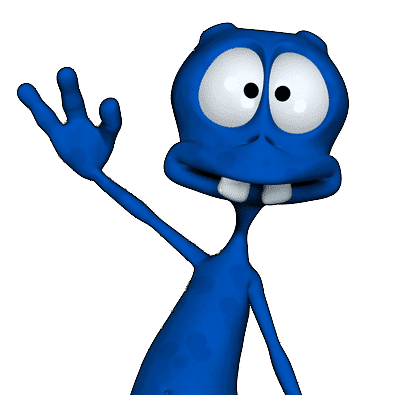Unfortunately, Google doesn’t really make these factors public. However, search engine optimization specialists have long since tried reverse engineering Google’s ranking algorithm. Conducting various experiments and tests, they ‘trip the wire’ to get a clue about what Google deems vital in ranking web pages on search engine results.
Their findings will tell you optimizing specific page elements can directly or indirectly lead to a gain in your SERP rankings. Here are three specific content elements you can optimize for SEO.
1. Content Topic and Form
Should you write about just anything that tickles your fancy? You may if you simply want personal satisfaction. However, that's not a good strategy if your goal is to increase website traffic.
If your objective is to rank highly on search engine results pages for search engine users to click on your link and land on your website (i.e., you want to earn traffic and perhaps product sales through SERPs), you must match your content to the search intent inherent in your keyword.
In other words, you must determine the answer to this question: When people use your keyword on search engines, what answers are they looking for, and what type of content do they expect to find?
Finding User Search Intent
To find out, plug your keyword onto the Google search bar to see what kind of content comes up. Are they category and product pages? Did you get informational guides, listicles, and infographics?
Next, assess the search intent underlying your keyword or search phrase. If your search yields product or category pages, your keyword is likely inherently transactional. That is, to say, it is a word or phrase people use to search for products and services to try or buy.
Meanwhile, your keyword is probably informational if your search resulted in informative content (e.g., how to do something, 10 tips to achieve something, etc.). In other words, people use your keyword to look for information or clarity.
Optimizing Your Content Topic and Form to Match Search Intent
Armed with information on the type of content Google serves up in SERPs for your keyword, you need to:
- Write content (or repurpose existing content) to satisfy search intent.
- Use the content form prevalent in SERPs.
To illustrate, suppose you wish to rank for ‘buy diamond engagement rings.’ Your research indicates people use the phrase when shopping for diamond engagement rings (i.e., the keyword is transactional), and Google serves product and category pages in response to this query.
To match search intent, you can create a category page for diamond engagement rings as well as product pages for individual diamond engagement rings in your inventory.
2. Title Tag
The title tag is a hypertext markup language tag that gives your HTML document (i.e., your web page) a name. You will find the title tag in the source code of a web page, enclosed in <title></title>. It is shown on SERPs, displayed on web browser tabs, and saved as the content title when bookmarked.
In the context of SEO, your content title tag tells Google what the text is about.
If your category page title is <title>Conflict-Free Diamond Engagement Rings from Australia</title>, it's a clear signal to Google that your page is about conflict-free diamond engagement rings from Australia.
Optimizing Your Title Tag
Use your keyword in your title tag. That's a surefire way to tell Google your web page content is relevant to that keyword and thus must be filed or indexed accordingly.
Begin your title tag with your keyword — or put the keyword as close as you can to the beginning of the title tag. Suppose your keyword is ‘used vintage designer bags,’ and you're writing informational content about how to tell if a used vintage designer bag is authentic or not. In this case, your title tag can be something like this:
<title>Used Vintage Designer Bags: How to Verify Authenticity</title>
You can also use parentheses and brackets in your title tag. This can help your title stand out on search results pages. For example:
<title>Used Vintage Designer Bags: How to Tell What’s Real (or Fake)</title>
Finally, keep your title tag length from 50 to 60 characters.
3. Meta Description
HTML metadata tags provide information about a web page. The meta description is one of these metadata tags, describing and summarizing a web page's content. You'll see it on a page’s source code enclosed in <meta name "description">.
The meta description has long ceased to be a direct ranking factor. However, it plays an indirect role in your SERP rankings.
In SERPs, search engines include short snippets with the resulting web page links to give users more context about their search results. Search engines often lift snippets directly from actual page content. However, they also sometimes use meta descriptions.
Thus, your page meta description is an opportunity to control your brand’s narrative on SERPs. If exceptionally well-crafted, your meta description can improve your SERP click-through rates (i.e., lead more people to click your web page link from the search engine results pages).
The click-through rate is a direct search ranking factor. If more people click on your link when they see it on the SERPs for a particular keyword, Google may give you a higher SERP ranking for that keyword.
Optimizing Meta Descriptions
Include keywords your target audience uses to find a business, product, or service like yours. Google highlights words in meta descriptions that match the user's search terms. The more words match, the more your link will stand out in the SERPs.
Caveat: Your meta description should describe the content your audience will find if they click through to your web page. Don’t promise anything on your meta description that your content does not deliver.
While you want click-throughs from SERPs, you don't want just any traffic. You want people who are genuinely interested in your content.
Disinterested and misled site visitors will simply bounce out of your web page (i.e., land on your web page, then exit immediately afterward). You don’t want that because bounce rates negatively correlate with SERP rankings.
Keep your meta description from 120 to 155 characters long. A short meta description will not get cut off on SERPs. Google trims overly long meta descriptions.
Include a call to action. Your meta description must explicitly invite your audience to follow the link to your website.
Optimizing Content for SEO
To rank well in the SERPs for your keyword, you must satisfy the search engines’ ranking criteria. This is no easy feat. Google alone has over 200 factors in its search ranking algorithm.
That being said, you should definitely try to do what you can.
Start by optimizing specific elements of your content, including its topic and form, title tag, and meta description.
About the Author: Jinky Elizan
Jinky is a content writer for SEO Sherpa. She has more than 15 years of experience in producing content for SEO, inbound marketing and link building as well as in creating copy for web pages and social media. She also develops WordPress websites.




Content elements must be very descriptive and informative, thanks for providing the information.